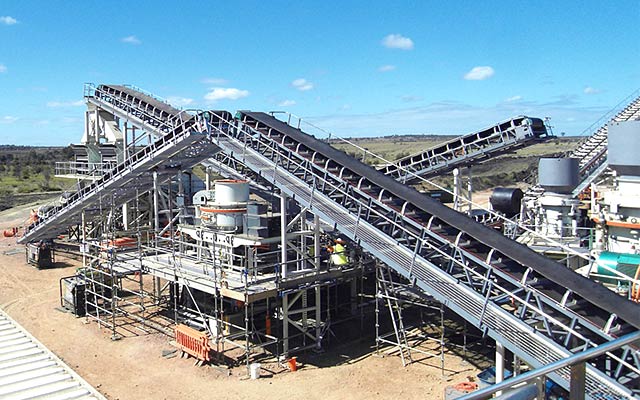A limestone crushing plant is a facility that processes limestone into various sizes and grades for use in construction, manufacturing, and other industries. The crushing process involves multiple stages, including primary crushing, secondary crushing, and screening. To accomplish this, various machines and equipment are used in a limestone crushing plant. In this article, we will explore some of the common machines found in such a plant.
Primary Crusher: The primary crusher is the machine that initially breaks the limestone into smaller pieces. It is typically a jaw crusher or a gyratory crusher. The primary crusher reduces the size of the limestone rocks to a manageable size for further processing.
Secondary Crusher: After the initial crushing stage, the secondary crusher is used to further reduce the limestone size. Common types of secondary crushers include cone crushers, impact crushers, and hammer crushers. These machines break down the limestone into smaller fragments.

Vibrating Feeder: A vibrating feeder is used to transport limestone from the primary crusher to the secondary crusher. It ensures a continuous and controlled flow of limestone, preventing any blockages or disruptions in the crushing process.
Vibrating Screen: A vibrating screen is employed to separate different sizes of crushed limestone. It helps to ensure uniformity in the final product by segregating the limestone into different grades based on size.
Belt Conveyor System: Belt conveyors are used to transport the crushed limestone from one stage of the crushing plant to another. They are reliable and efficient, allowing for the seamless transfer of material throughout the process.
Dust Collection System: Limestone crushing produces a significant amount of dust, which can be harmful to workers and the environment. A dust collection system is employed to capture and control the dust generated during the crushing process, ensuring a safer working environment and reducing environmental impact.
Storage Silo: A storage silo is used to store the crushed limestone before it is transported for further processing or used in various applications. The silo provides a controlled and organized storage solution, protecting the limestone from moisture and other contaminants.
Crushing Plant Control System: To monitor and control the entire limestone crushing process, a crushing plant control system is used. This system enables operators to adjust the settings of the machines, monitor production rates, and ensure the smooth operation of the plant.
In conclusion, a limestone crushing plant consists of various machines and equipment that work together to process limestone into different sizes and grades. From the primary crusher to the vibrating feeder, vibrating screen, and belt conveyor system, each component plays a crucial role in the efficient and effective crushing process. Additionally, the inclusion of a dust collection system and a crushing plant control system ensures worker safety, environmental compliance, and optimized production.
